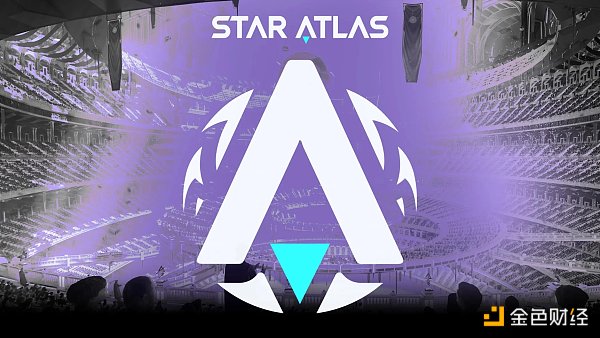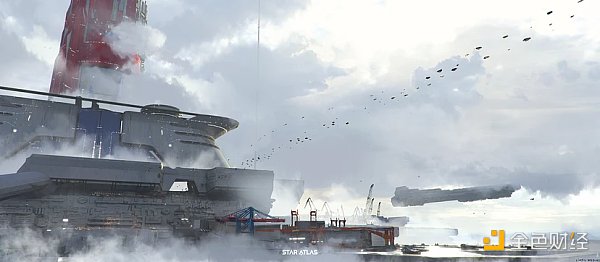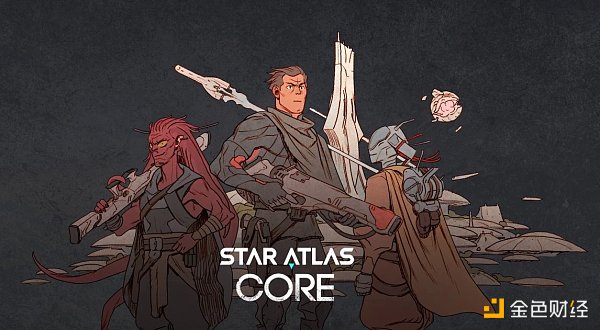After a massive layoff of 73%, can Star Atlas, a 3A masterpiece born in a bull market, still be launched as scheduled?
Can Star Atlas, a 3A masterpiece born in a bull market, still be launched as scheduled after a 73% layoff?Author: Zen, LianGuaiNews
Recently, the development company of the blockchain game Star Atlas on Solana ecosystem, ATMTA, announced a significant layoff, including full-time employees and contractors from the invited cooperative studios for game development. The total number of team members was reduced from 167 to 45, with a layoff rate as high as 73%.
Michael Wagner, the co-founder and CEO of ATMTA, said they reassessed their budget and development needs to ensure the sustainability of their infrastructure. He also stated that this is ultimately a process of “identifying key personnel who will enable us to achieve our long-term vision and continue building various product lines we are developing.”

- After LSDFi, will the liquidity provided by derivative LPDFi trigger the next wave of DeFi narrative?
- Bybit Payroll Manager Steals Large Amounts of USDT, Singapore Court Elaborates on Cryptocurrency Property Attributes
- Binance Chain L2 pioneering application MEKE to start public testing on July 31st
However, Wagner also acknowledged that the downsizing of the team may affect game development. After this round of layoffs, the joint development activities between ATMTA and the cooperative studios will be significantly reduced, and their flagship product line, the Unreal Engine team, will undoubtedly be the most affected. Considering that according to ATMTA’s original plan, it will take another 4 to 6 years to launch the full version of Star Atlas, this large-scale layoff may prolong the development cycle, and even worse scenarios cannot be ruled out.
Born in a bull market and widely optimistic, suffered a 50% loss on FTX
Due to the long development cycle of AAA games, which usually takes at least 3 to 5 years and consumes substantial funds and resources, it is common for development teams to terminate projects and disband related teams to cut losses in a timely manner. For example, at the end of last year, the Chinese gaming giant miHoYo disbanded the AAA game “Project SH,” which was also developed using the Unreal Engine. This game, which features a 2D open world shooter, was first announced in 2019. It was personally led by the founder of miHoYo and the producer of “Genshin Impact.” However, due to the project’s progress falling short of expectations, it was forced to be terminated, and even until its dissolution, not much information was disclosed to the public.
Star Atlas initially gained widespread attention not only because of its space theme, which was in line with the trending metaverse concept at the time, but also because of its cinematic-quality trailer and grand world-building. Thanks to blockchain and NFT technology, Star Atlas was able to raise funds through token and NFT sales before the game’s release. It has currently launched a game-centered NFT trading market called the Galactic Marketplace and an online web game based on Star Atlas, realizing a model of earning money while developing.

As a project launched during the cryptocurrency bull market in 2020, Star Atlas obviously cannot compare with the major players in the traditional gaming industry in terms of funding support and development technology. Initially, it completed its seed round financing under the leadership of Serum, a DeFi project in the Solana ecosystem. Later, it raised more than $10 million from institutions such as PetRock Capital, Animoca Brands, Alameda Research, Bixin Ventures, Tagus Capital, Megala Ventures, and CryptoViet Ventures. In 2021, Star Atlas also raised $1.5 million in the sales of game token ATLAS and governance token POLIS. The current circulating market value of these two tokens is around $18 million. However, in November last year, ATMTA suffered a loss of $16 million on FTX, where it had a significant exposure. This loss accounted for about half of the company’s funds, which became inaccessible when FTX halted withdrawals. After that, ATMTA managed to recover a small portion of the lost funds by selling the debt to some investment funds.
Under the background of a long bear market, ATMTA, which has been seriously injured on FTX, still generates some income every month. However, the money they earn is no longer enough to cover the millions of dollars in monthly team operating expenses. Wagner claimed last year that this game would cost nearly $200 million on NFT alone, but its current scale is far from that. Regarding layoffs and the future development of Star Atlas, Wagner recently stated that ATMTA will focus on upcoming products, which may bring attractiveness and increase revenue to Star Atlas, thereby driving its long-term goals.
There has always been controversy about the long-term operation strategy of Star Atlas, which promises players rewards. Kieran Warwick, co-founder of blockchain game Illuvium, questioned the sustainability of the project last year, stating on Twitter that Star Atlas will “completely destroy the retail industry.” Kieran Warwick compared Star Atlas to Star Citizen in the debate. Star Citizen is a non-blockchain game with a similar space theme, integrating combat, world construction, and commerce, and presenting players with a sensory experience of pilots flying and engaging in interstellar combat in an extremely realistic and unprecedented way. Star Citizen has raised a total of $500 million through crowdfunding as of last year and has a large-scale development team. After more than ten years of development, the game is still in the alpha phase, and the single-player mode “Squadron 42” it is developing has been delayed multiple times, from the fourth quarter of 2020 until now.
Will still remain in the Solana ecosystem
Currently, the dilemma faced by Star Atlas is a common phenomenon in the industry. The Solana blockchain where the game is located itself also faces many challenges: many games and NFT projects have left this ecosystem, and some original Solana exclusive chain games have begun to seek expansion to other blockchains.

However, the close relationship between ATMTA and Solana remains unshaken. Wagner said, “We have been and will continue to strongly support Solana and its innovations. I sincerely believe that the work we are doing based on on-chain game logic can only be realized on networks like Solana.” F-KIT developed by ATMTA is a toolkit created to improve the efficiency of Solana game development. It quickly and easily connects players to the Solana blockchain from within Unreal Engine 5, and provides developers with UI blueprints and visual coding capabilities for integration with any Solana program.
Although ATMTA is reducing its workforce, Wagner said the team is still moving forward and plans to rebuild the Unreal Engine team in a timely manner. In other words, the long-term goal has not changed, but the Star Atlas team is changing direction in the difficult encrypted market and financial setbacks. “We will not stop the development of Unreal Engine,” he said. “Our vision has not changed at all. We are just readjusting the priorities of our work, focusing on things that can be easily replicated immediately, and we leverage this to expand our user base and generate more substantial revenue.”
“When we launched this product in January 2021, we didn’t have a single dollar; we only had a whitepaper and a dream.” In the face of recent setbacks, Wagner wants to emphasize that the company is constantly moving forward, building products, and maintaining the vision of turning Star Atlas into a reality.
We will continue to update Blocking; if you have any questions or suggestions, please contact us!
Was this article helpful?
93 out of 132 found this helpful
Related articles
- Involved in a transaction of 400 billion yuan, how do law enforcement agencies dispose of confiscated cryptocurrencies?
- How will the five market makers improve the liquidity of WLD compared to Zero as a market maker for PEPE?
- Analyzing UNI Long-tail Liquidity Scenarios How Does it Work?
- African Gold Rush I Help Chinese People with Worldcoin KYC, Earning Up to 20,000 RMB per Day
- Is the concern about Worldcoin groundless?
- Conversation with LianGuai Founder Pan Zhixiong How do Buidlers work?
- Aztec Decentralized Sequencer Solution Analysis Proposal B52 and Proposal Fernet






